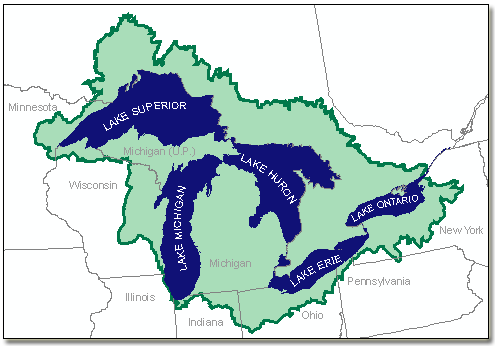About the Great Lakes Initiative
 The Great Lakes watershed includes eight U.S. States: Minnesota, Wisconsin, Illinois, Indiana, Michigan, Ohio, Pennsylvania, and New York.
The Great Lakes watershed includes eight U.S. States: Minnesota, Wisconsin, Illinois, Indiana, Michigan, Ohio, Pennsylvania, and New York.
In March 1995, U.S. EPA published Water Quality Guidance for the Great Lakes watershed, commonly known as the Great Lakes Initiative (GLI).
The guidance consists of:
- water quality criteria for 29 pollutants to protect aquatic life, wildlife, and human health, and
- detailed methodologies to develop criteria for additional pollutants;
- implementation procedures to develop
- consistent, enforceable water quality-based effluent limits in discharge permits,
- as well as total maximum daily loads of pollutants that can be allowed to reach the Lakes and their tributaries from all sources;
- and antidegradation policies and procedures.
Great Lakes States and Tribes are to use the water quality criteria, methodologies, policies, and procedures in the GLI to establish consistent, enforceable, long-term protection for fish and shellfish in the Great Lakes and their tributaries, as well as for the people and wildlife who consume them.
See the Federal Register for further information and procedures: Final Water Quality Guidance for the Great Lakes System: Final Rule. 40 CFR Parts 9, 122, 123, 131, and 132 (March 23, 1995)
